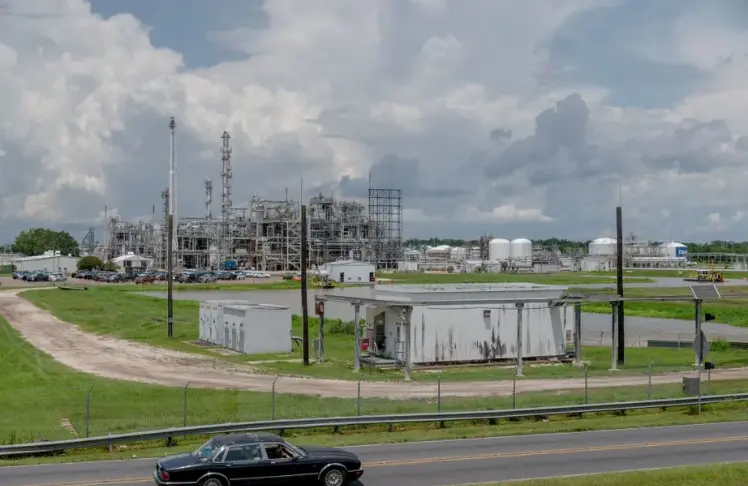
Limits on chloroprene emissions will specifically target the plant that contributes to the highest risk of the disease in the country.
Rarely does the federal government regulate against a single company. But with the new batch of pollution restrictions announced by the Environmental Protection Agency on Tuesday, the Biden Administration has essentially done just that.
Under the new rules, about 200 chemical plants across the country (half of which are located in Louisiana and Texas) will have to drastically curb their emissions of a number of chemicals, including chloroprene — which only one industrial site in the U.S. produces: the Denka Performance Elastomer plant in LaPlace, Louisiana, located squarely in the heart of Cancer Alley.
Denka is the sole domestic manufacturer of neoprene, the synthetic rubber used to make wetsuits — and also laptop cases and insulating water bottle jackets and orthopedic braces and fan belts in car engines, too. The pliable, insulating rubber is made by polymerizing liquid chloroprene, a novel chemical compound originally developed by DuPont.
The company produced the synthetic rubber in the now-shuttered Rubbertown complex in Louisville, Kentucky, starting in the 1930s and then later in LaPlace, where DuPont opened a second neoprene factory in 1969 that was sold to Denka in 2015.
While DuPont’s own scientists had well-documented — and, at the time, well-hidden — concerns that being exposed to chloroprene could harm human health, it wasn’t until 2010 that the EPA named it a likely carcinogen. In addition to being associated with a variety of cancers, chloroprene exposure causes headaches, rashes, digestive issues, and heart palpitations, and weakens both kidney function and the immune system overall.
The EPA’s designation set off a chain of events that have brought some terrifying clarity to the often very nearby neighbors in predominantly Black St. John the Baptist Parish, who have seen generations suffer from cancer and other health problems.
A federal air quality monitoring report published in 2015 found that the lifetime cancer risk in the area surrounding Denka is 777 cases per million people — which was not only the highest rate in the country, but also an astonishing 800 times the national average. An updated report published in 2018 found that the risk was even higher: 1,505 cancer diagnoses per million people.
One EPA monitoring site recorded levels of chloroprene near the plant at 121 times higher than what the EPA determined was safe when the carcinogen designation was made in 2010. That monitoring site is less than a half mile away from an elementary school, where 90% of the students are Black and brown.
The situation has improved in recent years after Denka entered into a voluntary agreement with the Louisiana Department of Environmental Quality in 2017 to reduce its emissions. The company has reportedly spent $35 million to cut emissions by 85%. But now, with the new EPA regulations — which the company called “draconian”— it will have to go much, much further, cutting emissions by a further 80%.
“By its very nature, this rule is providing protection to environmental justice communities — Black and brown communities, low-income communities — that have suffered for far too long,” EPA administrator Michael Regan said in a press call.
If the new chloroprene rules are in effect for Denka alone, the benefits of that particular standard are just St. John the Baptist Parish too, and they have the potential to be profound. According to the EPA, the reduction in emissions will, in turn, cut the number of people in the community with an increased cancer risk by 96%.















